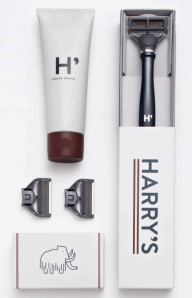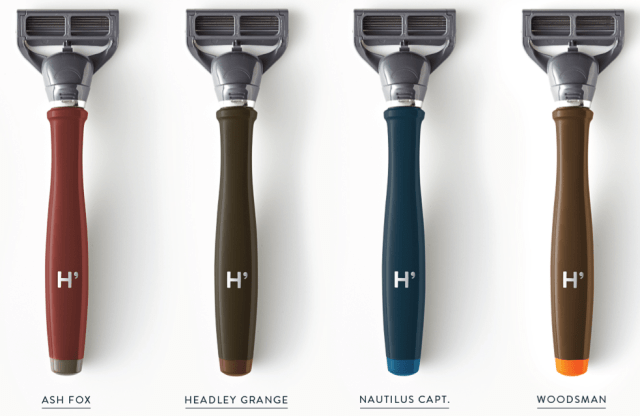Not every 10-month old startup can say that it has crossed a handful of oceans and international borders to purchase a 93-year-old factory — or raised $122.5 million to do so. Yet, not every Internet startup is trying to make waves in the everyday world of shaving, where 85 percent of the market is controlled by a couple of weathered giants like Gillette and Schick. What’s more, while adopting a purely online and direct-to-consumer model can help startups cut out that pesky middle man, to truly reduce the friction and high costs in the market and iterate more quickly, you have to control manufacturing.
So, that’s what Jeff Raider and co-founder Andy Katz-Mayfield are attempting to do with Harry’s. Raising $122.5 million from Tiger Global, Thrive Capital, Highland Capital, SV Angel and a handful of others, Harry’s has shelled out $100 million to purchase Feintechnik, a company and factory that have been manufacturing razor blades since 1920 and the source of Harry’s shaving products.
Prior to launching their online shaving supply startup, the Harry’s co-founders traveled all over the world to source the best manufacturers, but ultimately they settled on Feintechnik. The reason, Raider explains, starts with the billions of razor blades it has produced over its 90-plus year history, and its experience making double-edged blades, as well as selling to leading distributors across Europe.
The founders also said they chose to work with Feintechnik because of its flexibility, having not only produced blades that end up in low-end razors, but the more complicated, tougher-to-produce blades that end up in higher-end, five-blade razors. It is these five-blade razors that have become the staple of Harry’s since it launched 10 months ago.
But the key motivation behind the acquisition is the move towards vertical integration. With the purchase of Feintechnik, Harry’s now has the ability to control the design and manufacturing of its products, and sell directly to consumers.
In the shaving industry, only a few companies have been able to create a vertically integrated production and supply chain. So, while it may seem an unusual move (and investment) for a company at this stage, the co-founders believe it will pay huge dividends over the long term. Part of it is also the fact that Harry’s can now say that it has joined Schick and Gillette in the “vertically integrated club” — making it a group of three.
 While Harry’s is part of a new generation of “sexy” e-commerce companies attempting to bring a new spin to familiar, everyday products and businesses — like Warby Parker had done for eyewear and Bonobos is doing for men’s clothing — these young brands still rely largely on third-party manufacturers. Though Raider is a Warby Parker co-founder himself, and his former company has become the poster child for the direct-to-consumer model, not even Warby Parker can say that it truly controls the entire customer experience — from design and distribution to manufacturing.
While Harry’s is part of a new generation of “sexy” e-commerce companies attempting to bring a new spin to familiar, everyday products and businesses — like Warby Parker had done for eyewear and Bonobos is doing for men’s clothing — these young brands still rely largely on third-party manufacturers. Though Raider is a Warby Parker co-founder himself, and his former company has become the poster child for the direct-to-consumer model, not even Warby Parker can say that it truly controls the entire customer experience — from design and distribution to manufacturing.
It’s like this ability to control production along with the similarities in their approach to branding that led each of Raider’s three fellow co-founders at Warby Parker to join in the startup’s latest round. An investment, which, importantly, brings the 10 month-old startup into the black — thanks to the existing profitability of Feintechnik’s business.
As to the remaining $22.5 million of the investment left over after its purchase of Feintechnik? The founders say that the company plans to expand its portfolio of Warby Parker-inspired trendy shaving products, which themselves have sold “over 100,000 razors” since launch. The key, they explain, is creating a consumer product brand that combines value with a boutique, classic feel.
Harry’s shaving kits offer a razor, three replacement blades and shaving cream for $15 a pop, which most would consider a deal compared to, say, popular Gillette razors that sell for $12 but only include two replacement blades. Both are five-blade razors, but its “nicer” handle, which sells for $25, is still a fairly good deal compared to similar products offered by Gillette and Schick. On top of its value-oriented approach, Harry’s near-term and long-term plans are aimed at increasing its appeal to young, tech-savvy consumers.
This means that the company is also working to develop its data-based chops. Today, for example, Harry’s has begun to track customer purchasing habits in order to allow them to email those customers when they think it’s time for them to buy new blades. As its customer base expands and it gathers more data on their style and tastes, the company will look to expand this kind of functionality to bring more Amazon-style personalization to its shopping experience.

Furthermore, while Harry’s razors have traditionally come in a limited number of designs and kits, with its new investment and vertically-integrated supply chain, going forward, the company will look to add to its product roster. In the near-term, this means that customers can likely expect Harry’s to both expand its seasonally-inspired product lines as well as its core shaving kits.
Though the founders contend that they have nothing concrete on the radar today, it wouldn’t be unexpected to see the company tiptoe its way into, say, electronic shavers and, further down the line, expand into the larger men’s grooming market. In the not-so-distant future, you might find yourself perusing Harry’s brand aftershave or deodorant to boot.
